Civil War Artillery: Bronze Guns
One of the things that I’ve become more interested in over the years is artillery – especially the artillery that was used during the Civil War. I started a series a few months ago to explain some of the basics of these weapons – it is best to see that article first to get familiar with the “anatomy” of the guns. Today, I want to explain how to identify some of the different types of bronze cannons, using familiar examples from the collection at Gettysburg.
There are a few main types of bronze guns that we’ll be looking at today:
Model 1857 12-pounder Field Gun (The “Napoleon”)
Overview: The most common type of bronze gun during the Civil War was the Model 1857 12-pounder Field Gun, commonly known as the “Napoleon” since this was an American copy of a French design that was popular with the famous general. There were 244 (though not all made from the US pattern) of these present at the Battle of Gettysburg.
While still a seemingly old-fashioned smoothbore, these weapons represented an innovative design, and were officially referred to as Gun-Howitzers, as they could operate effectively firing at either low (like guns) or high (like howitzers) angles. The “12-pounder” aspect of its name refers to the weight of the solid-shot projectile it would have fired. While a rifled weapon is more accurate at long range, the Napoleon’s large, smooth bore (4.62 inches in diameter) made it very well suited to fire canister rounds, making it absolutely deadly against troops at close range.
Photos:
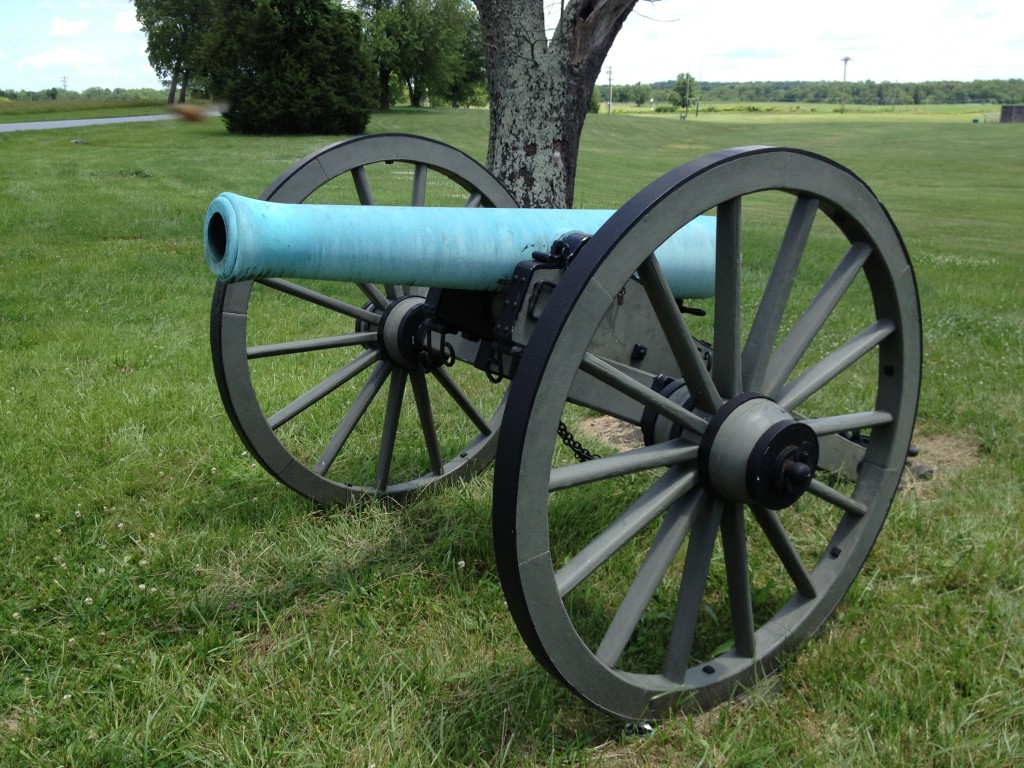
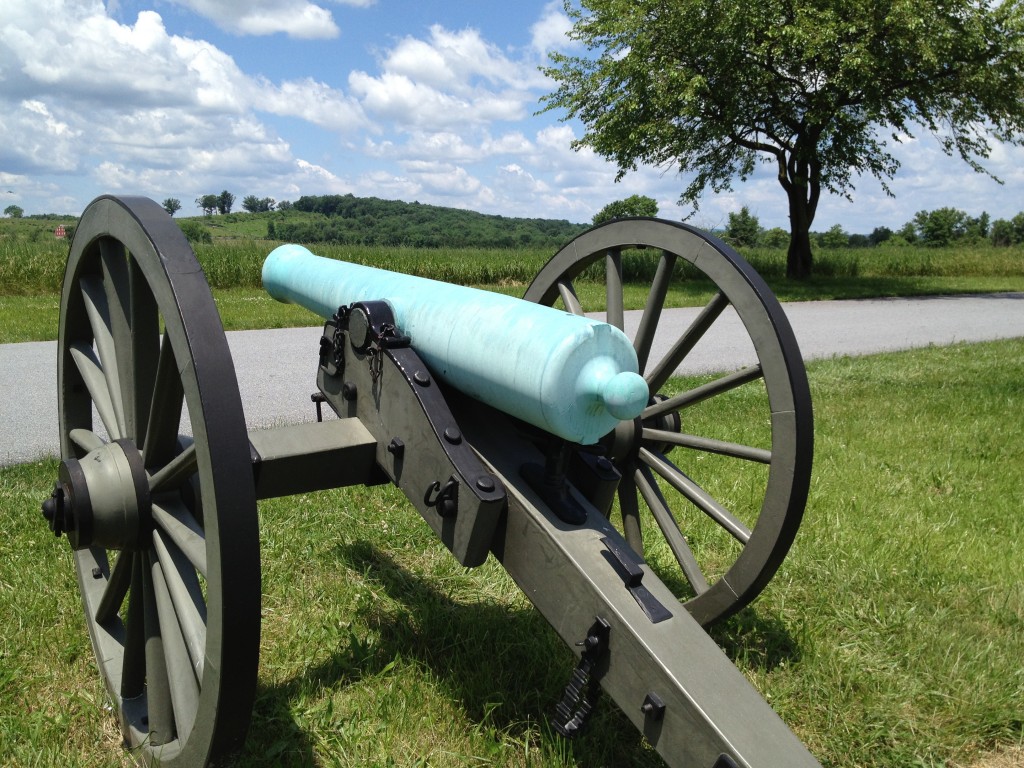
How to Identify: The most obvious clue from a distance is the color, of course. Since the Napoleons are bronze, they will be greenish in color. The shape of the gun is smooth. There are no ornamental beads running around the tube like you see on the older 6-pounders. The tube is tapered from the breech down to the muzzle, which is flared out. The breech of the gun is relatively flat on the back, with a flattened area on the bottom of the tube where the gun rests on the elevating screw. Napoleons generally have markings on the front of the muzzle, and a “US” acceptance mark on the top of the barrel between the trunnions. There may also be markings on the breech, and the ends of the trunnions, as well as a foundry serial number on one of the rimbases.
Exceptions: Gettysburg has a few Napolens in the collection that were rifled. There were 6 of these produced, and so far as anyone knows, these were experimental weapons. They can be easily identified at a distance – while they are shaped like regular Napoleons, they have a fin-shaped front sight on the muzzle as you see on the example below:
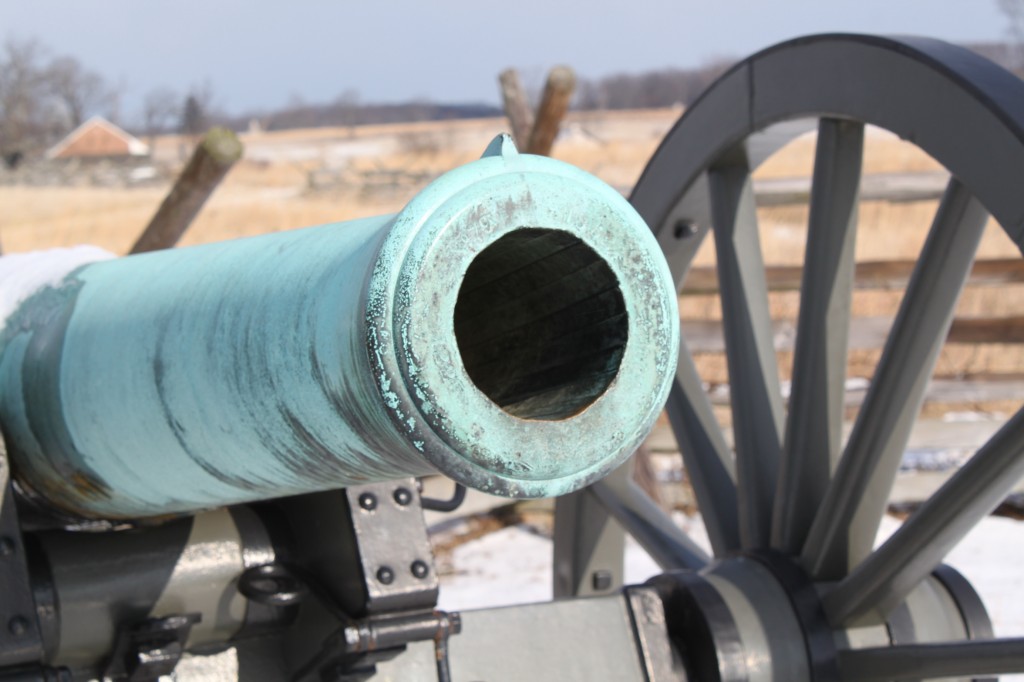
Fakes: There are a few – about 15 – “False Napoleons” at Gettysburg (and maybe on some other fields, too). Since Napoleons are in short supply, and they share a similar shape, these are actually Model 1841 6-pounders that were modified in the post-war years to look like Napoleons so that they could be placed in battlefield displays. If you look closely, you’ll see marks on the barrel near the muzzle where the astragal was removed, as well as in front of the trunnions where the lip has been smoothed down, and on the breech where the base ring was shaved-down. These guns have also had the first 6 inches or so of their bore increased in diameter to the 12-pound size – the rest remains the 6-pound gage – so that they look right from a distance. This is the easiest clue to know that you’re dealing with a “False Napoleon”. See the section below on the Model 1841 6-pounder to get an idea of what I’m talking about.
The Confederate “Napoleon”
Overview: This is the Confederate copy of the smoothbore US Model 1857 12-pounder design. Because of a lack of resources (both in material and manufacturing capability) these are generally pretty stripped-down copies. There isn’t a muzzle flare on these, for example.
Photos:
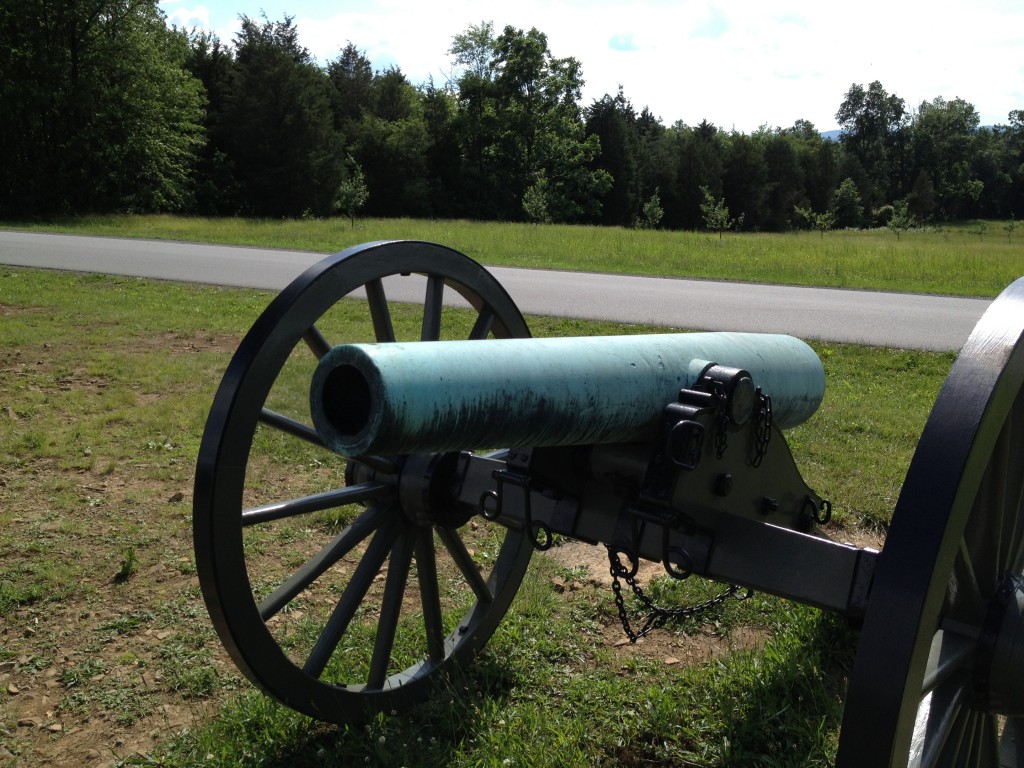
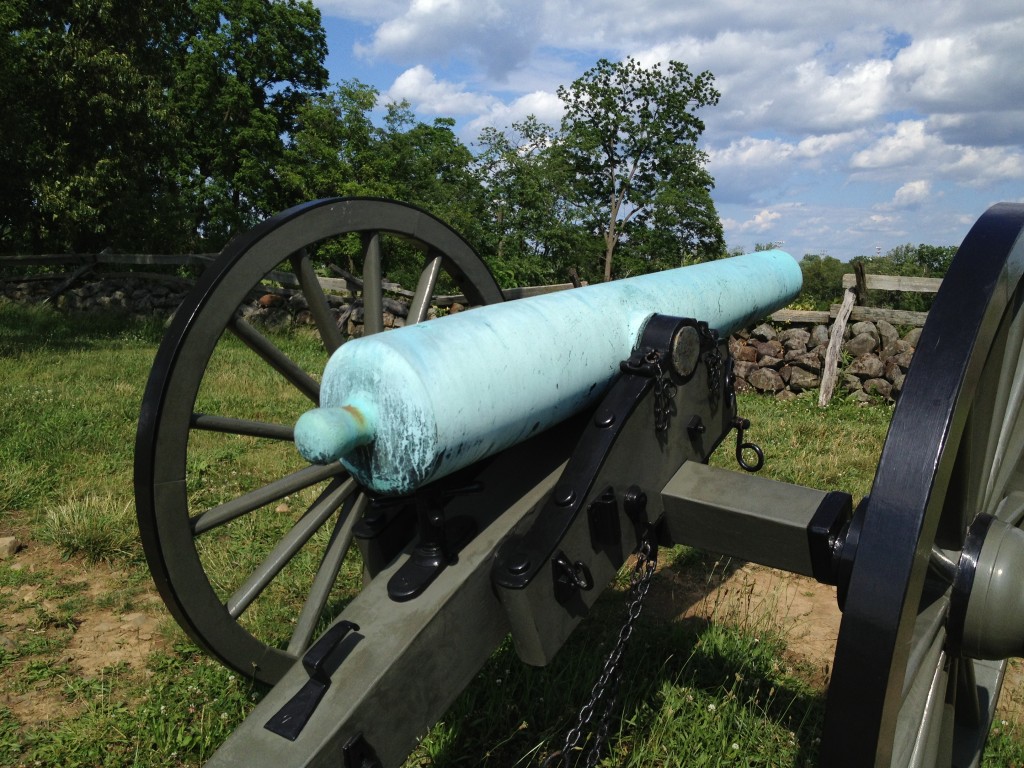
How to Identify: These are about the same size as a US Napoleon, but there is no flare at the muzzle – that’s the main visual difference. The tube still has a taper from the breech to the muzzle. Since the Confederacy had some difficulty acquiring a supply of copper (especially as the war went on) some of their guns have a dingy gray-ish appearance rather than the bright green you normally see on an old bronze gun. This was due to lead or other metals being mixed-in in place of copper in the bronze (though not in the example above, it appears). Like their US counterparts, these will have markings on the muzzle, breech, or trunnions.
Exceptions: There is at least 1 Confederate Napoleon at Gettysburg that was manufactured by Quinby and Robinson. This particular gun has a very simple, flat astragal around the muzzle. There may be other slight variants.
Fakes: None that I know of.
Howitzers
Overview: Not terribly popular for field use (there were only 33 of all types present at the Battle of Gettysburg), these weapons were designed to lob munitions over fortification walls at a high angle. They have short, very cylindrical barrels. Gettysburg has both the 12-pounder and 24-pounder varieties in their collection.
Photos:

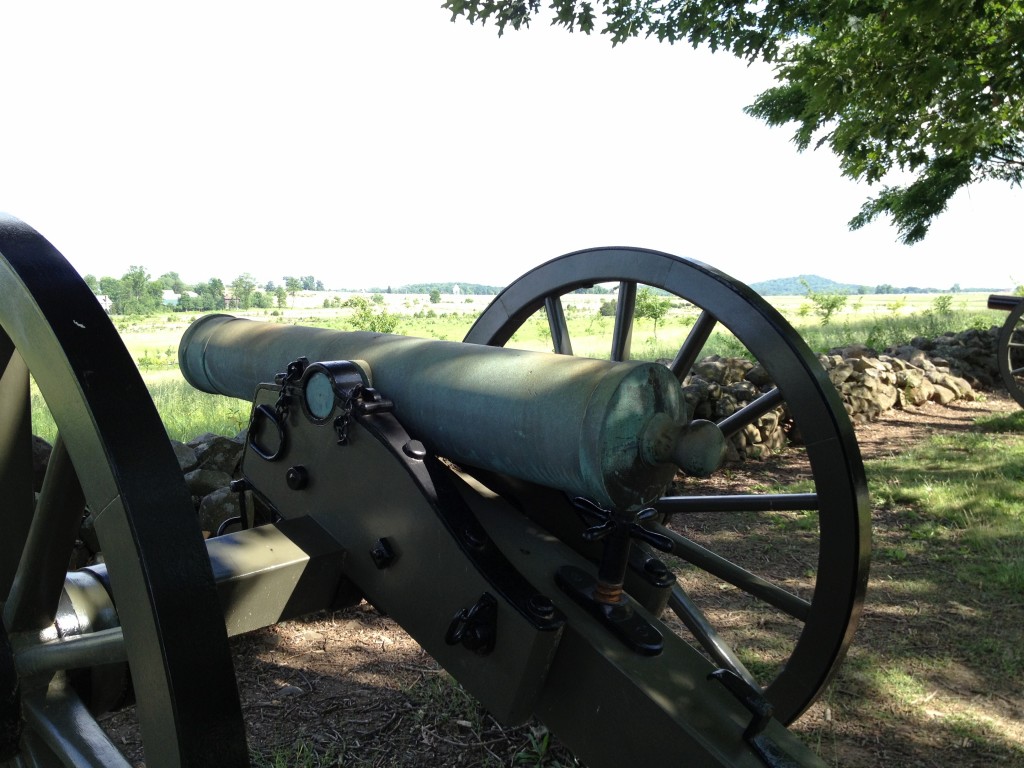
How to Identify: The short, cylindrical barrel is your best indication – you just have to learn to eyeball it. As you can best tell from the “front” photo above, there is no taper to the barrel – that’s your best clue. You’ll also note that the howitzer above has an astragal, a slightly thicker reinforce beginning just before the trunnions, and a raised base ring.
Exceptions: In the collection at Gettysburg, there are 2 Austrian-made 24-pounder Howitzers, currently located near the Mississippi Monument. These are easily identifiable by the large handles on top of the barrel at the trunnions.
Fakes: None that I know of.
Model 1841 6-pounder Guns
Overview: By the time of the Civil War, the 6-pounder gun was basically a pea-shooter. It was not powerful enough to really be considered serviceable in light of the advancement in weapons like the Model 1857 “Napoleon” 12-pounder, or the newer iron rifled guns. The Confederacy couldn’t always be so choosy though, and they had 1 of these guns in service at the Battle of Gettysburg.
Photos:

How to Identify: While physically smaller than the Model 1857 12-pounder Napoleon, they share a similar shape. Where the Napoleon is smoothly tapered from breech to muzzle, the Model 1841 6-pounder has a thicker reinforce that drops off sharply to the chase just in front of the trunnions, as you can see above. There is also a raised base ring, and an astragal near the muzzle. These elements give the guns a “fancier” look than the Model 1857.
Exceptions: There are 16 of the Model 1841 6-pounders on display at Gettysburg, but only 1 that is still in original condition. It is located along South Condeferate Ave., across from the Texas Monument. The other 15 have been converted to the “False Napoleon” design that I talked about above for battlefield display purposes.
Fakes: Since these weren’t in heavy use during the Civil War and there is plenty of supply, there’s been no need for fakes.
James Rifles
Overview: Another rare weapon (there were only 4 at the Battle of Gettysburg), the James was a relatively unsuccessful rifled bronze gun patterned on the 3-inch Ordnance Rifle design. Since bronze is a soft metal, it had a tough time holding rifling – repeated firings would wear the grooves down. Unlike the experimental rifled Napoleons, these guns were designed from the outset to be rifled. They fired a slightly heavier 14-pound round.
Photos:
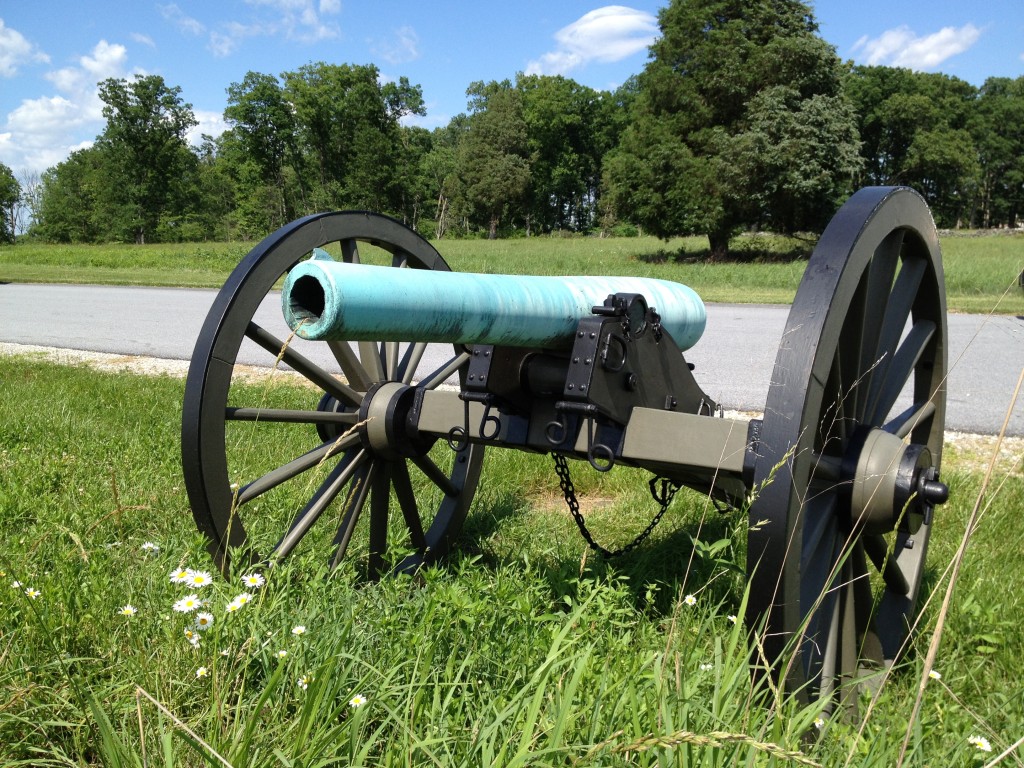
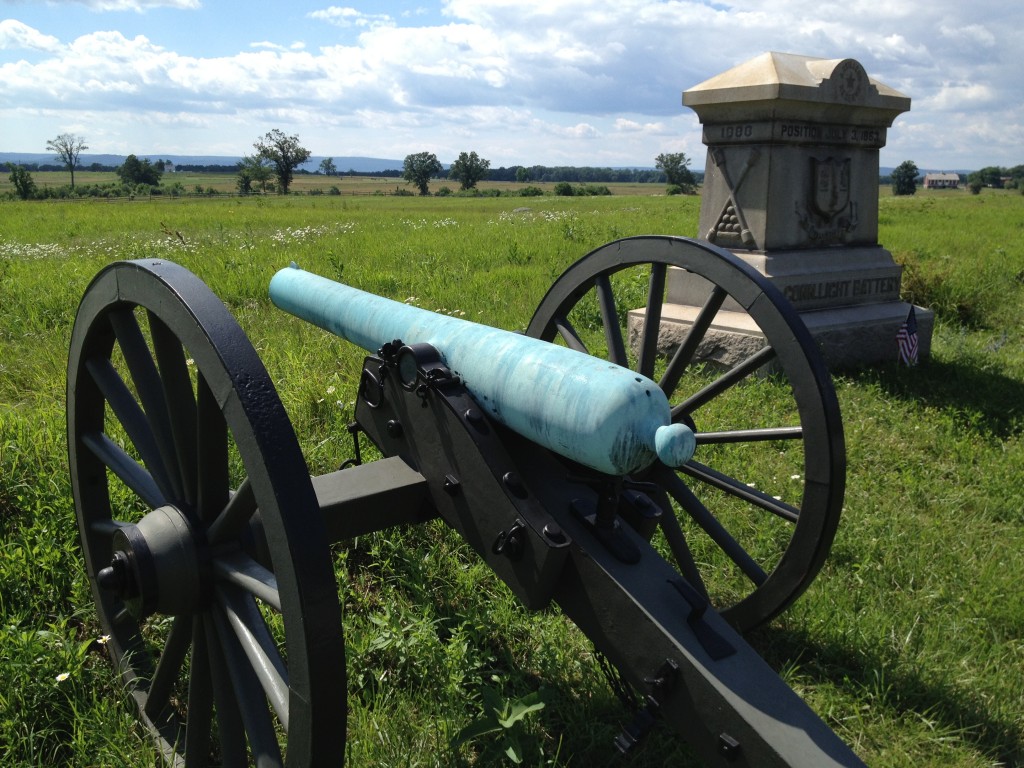
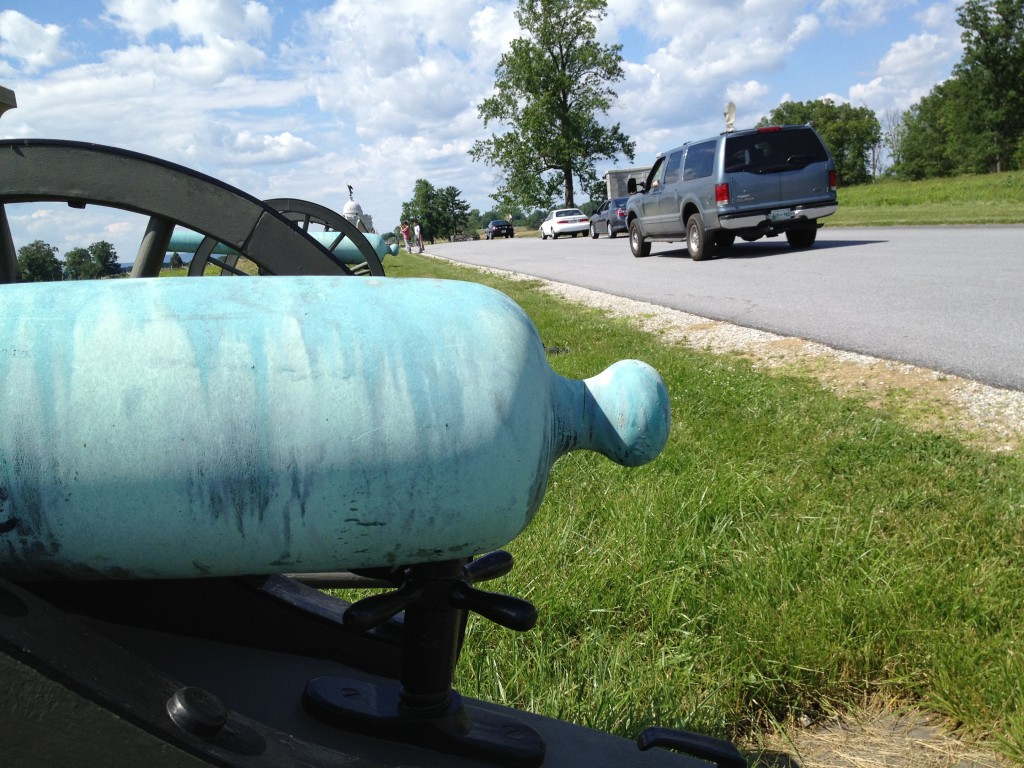
How to Identify: As I explained above, this weapon is a bronze copy of the 3-inch Ordnance Rifle pattern, so it looks like a green 3-inch Rifle in its shape. It has a nice smooth taper down to the muzzle, and that fin-shaped front sight that the rifled Napoleons have. The 2 that are on the field at Gettysburg are along Hancock Ave., south of the Pennsylvania Monument.
Exceptions: As far as I know, there aren’t any variations on the James pattern, although there was a Confederate copy of this design.
Fakes: None that I know of.
In the next installment, we’ll look at some of the iron weapons on display at Gettysburg, and how to tell them apart.
Very good post ! With all due respect , it is not spelled ” NapoleAn ” but rather NAPOLEON , and is is named after Napoleon III , the nephew of the famous general and Emperor of France Napoleon I . This type of cannon was copied from a model very popular in France in the mid nineteen century
Thanks for the comment. I can’t believe that I missed that spelling! It’s been corrected throughout the article.
Great summary of Civil War cannons, including Confederate variations. Well done! I enjoyed hearing the make up of the cannons at Gettysburg.
Great post! Just the information I was looking for. thank you